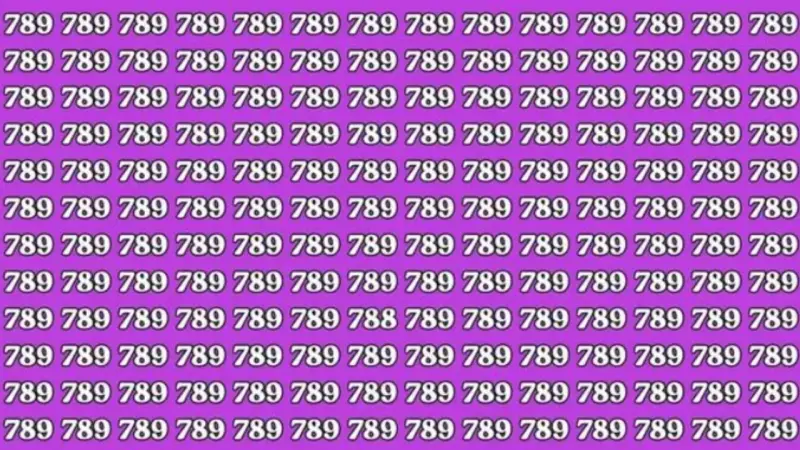
A new viral optical illusion is taking the internet by storm, challenging people to spot the hidden number '788' among countless '789's in just seven seconds. This visual puzzle separates those with sharp observation skills from the rest, testing both eyesight and mental processing speed.
The Challenge That's Driving Everyone Crazy
At first glance, the image appears to contain nothing but identical rows of the number 789. However, cleverly concealed within this numerical sea lies a single instance of 788, waiting to be discovered by the most observant eyes. The difficulty stems from the striking similarity between digits 8 and 9, which creates confusion for the brain when viewed in close proximity.
The challenge has become particularly popular because it offers a quick, seven-second test that claims to reveal your visual acuity and attention to detail. Social media users are sharing their results and competing to see who can spot the hidden number fastest.
Why Your Brain Struggles With This Illusion
Optical illusions like this one work by exploiting how our brain processes visual information. While our eyes capture the details, it's our brain that interprets what we're actually seeing. When presented with numerous similar patterns, the brain tends to fill in what it expects to see rather than processing each element individually.
Numbers 788 and 789 share repeating digits, causing our mind to assume consistency across the entire pattern. This mental shortcut, while efficient for everyday processing, becomes a disadvantage when searching for subtle differences in repetitive visuals. Only when you consciously slow down and focus does the odd number begin to emerge from the background.
Proven Strategy to Find the Hidden Number
If you've been struggling to locate 788, here's a helpful hint: stop scanning from corner to corner and instead focus on the center of the image. Most people instinctively search the edges first, but this illusion cleverly places the hidden number where you might not expect it - right in the middle.
The key is to examine each row methodically, tracing the digits slowly rather than jumping around randomly. This systematic approach helps override your brain's tendency to assume uniformity and allows you to spot the subtle variation in the number sequence.
Once you finally see 788, you'll likely experience that classic 'aha moment' and wonder how you missed it initially. This reaction perfectly demonstrates how easily our perception can be tricked by clever visual design.
What Your Performance Reveals About You
If you successfully spotted 788 within the seven-second timeframe, congratulations! This achievement suggests you likely possess 20/20 vision and exceptional attention to detail. Your brain demonstrates remarkable speed in distinguishing subtle differences, even in highly repetitive visual environments.
People with this level of visual acuity often excel in activities requiring sharp observation skills, including puzzle solving, editing work, and detecting minor design errors. Their ability to quickly identify patterns and anomalies gives them an advantage in many professional and recreational contexts.
If you needed more time to find the hidden number, don't be discouraged. These illusions test more than just eyesight - they also measure patience and pattern recognition abilities. Taking extra time to focus actually trains your brain to notice hidden details more efficiently in future challenges.
The Science Behind Our Love for Visual Puzzles
Optical illusions continue to captivate people worldwide because they offer fascinating insights into how our vision and brain work together. They dramatically demonstrate that seeing isn't always believing, as minor design tricks can completely alter our interpretation of visual information.
These puzzles serve as entertaining reminders that our perception is a constructed experience rather than a perfect reflection of reality. The gap between what exists and what we perceive highlights the complex processing that occurs between our eyes and brain, making optical illusions both entertaining and educational.





